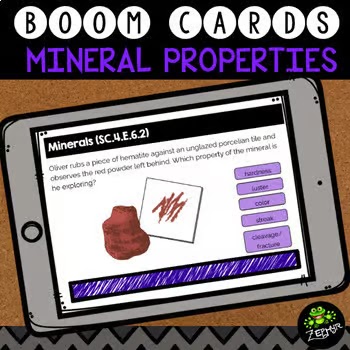Learning about the hardness of minerals provides an exciting opportunity for students to practice scientific testing and observation. This hands-on activity introduces students to the concept of mineral hardness and how it helps identify different minerals. Using a simple series of scratch tests, students will sort their samples into categories and record their findings, all while deepening their understanding of this key mineral property.
Start the lesson by watching the video clip on mineral hardness, which explains how some minerals can be easily scratched by a fingernail, while others are much harder and resist scratching altogether. Use this as a discussion starter, asking students why hardness might be an important characteristic in identifying minerals.
After the discussion, students will test the hardness of their mineral samples by following a sequence of scratch tests. First, use a fingernail to try to scratch the surface of the mineral. If the sample is scratched, place it in the Soft column and do not test it further to avoid damaging the sample. Next, test the remaining samples with a penny. If the penny scratches the mineral, place it in the Medium column. For those not scratched by the penny, use a steel nail. Minerals scratched by the nail belong in the Hard column. Any samples that cannot be scratched by any of the tools can be categorized as Very Hard.
As students work, have them record their observations on the Mineral Properties Recording Sheet, noting the tools used and the results of each test. This systematic approach not only teaches the concept of hardness but also reinforces the importance of careful observation and accurate data recording. By engaging in this activity, students gain a hands-on understanding of mineral hardness while applying scientific methods in a fun and interactive way!
Using Boom Cards for Review
Enhance your students’ understanding of mineral properties with my Boom Cards, designed to make review both interactive and effective. These self-checking digital task cards are perfect for preteaching key concepts, helping absent students catch up, or offering extra practice for those who need it. Whether in the classroom or at home, they provide a fun and accessible way to reinforce learning and build confidence.
Wrapping Up
If you’re planning to teach about mineral properties, I’ve created sorting mats to help students take their learning further by categorizing and analyzing mineral samples. These mats are a valuable resource for any classroom and can be downloaded below. By incorporating hands-on activities, students can connect theoretical knowledge to real-world examples, making mineral properties more engaging and meaningful. This activity is a fun and educational way to bring science to life, and I highly recommend giving it a try with your class!





